
Susan Tighe, PhD, P.Eng, FCAE, FCSCE
Professor Susan Tighe is the Provost and Vice President Academic and a Professor of Civil Engineering at McMaster University.She is the past Norman W. McLeod Professor in Sustainable Pavement Engineering, and Deputy Provost and Associate Vice-President at the University of Waterloo. She is Past President of the Canadian Society for Civil Engineering (CSCE) and Past Director of the Centre for Pavement and Transportation Technology.She has been a licensed professional engineer in Ontario since 1995. She has been involved in several research projects related to pavement engineering and management and she led the development of the 2013 Pavement Asset Design and Management Guide for the Transportation Association of Canada and is author of over 400 technical publications. She is a Fellow in the Canadian Academy of Engineering (FCAE) and Fellow of the Canadian Society of Civil Engineering (FCSCE).
She has successfully completed over 80 graduate students.During sabbaticals she has spent time in Australia working for a contractor, and has also received academic Fellowships including the Erskine Fellowship at the University of Canterbury in New Zealand, the U.K. Royal Academy of Engineering University of Nottingham in England and the Queensland Pavement Center located at University of the Sunshine Coast Australia.
Pavement Risk Assessment for Future Extreme Precipitation Events Under Climate Change

Dr. Linbing Wang
Dr. Linbing Wang is a professor in civil engineering materials and transportation infrastructure at Virginia Tech, and an adjunct professor at the National Center for Materials Service Safety of University of Science and Technology Beijing. He is the founding chair for the Committee on Mechanics of Pavements, former Chair of the Nanomechanics and Micromechanics committee, a Fellow of the Engineering Mechanics Institute of ASCE. Dr. Wang has led more than 70 research projects funded by NSF, NCHRP, FHWA, DoD, DoA, DoTs, MOST and CNSF. Specific foci of his research include multiscale characterization, modeling and simulation; smart and sustainable technologies; energy harvesting and sensor development; laser interferometry for material characterization and pavement assessment; health monitoring; innovative infrastructure assessment and performance predictions; high performance and multifunctional materials; pavement testing and mechanistic pavement design; infrastructure preservation and management; and IoT sensor network for structural health monitoring. Dr. Wang has served as member of committees of TRB, ASCE, and panels of NCHRP and NSF. He is the author of Mechanics of Asphalt, Microstructure and Micromechanics, McGraw Hill, and author/co-author of more than 220 publications. Dr. Wang has organized/co-organized a number of international workshops, symposiums, conferences and hosted student/faculty exchanges with universities in China and Europe.
Multiscale Simulative Testing of Asphalt Pavements and Materials
Linbing Wang, Ph.D., P.E., Professor in Civil Engineering
Simulative testing of asphalt pavements and materials refers to applying scaled or full scale wheel loading to scaled or full scale pavements or materials, and characterizing the performance of scaled or full scale pavements and materials. Many testing devices and facilities such as Asphalt Pavement Analyzer (APA), Model Mobile Load Simulator (MMLS), Accelerated Loading Facility (ALF), and Full-scale Testing Track have been widely used in pavement structure and material evaluations. Nevertheless, associating the performances of scaled pavements under scaled loading at different scales is a challenge. This seminar will cover a number of studies on how multiscale simulative tests are used to evaluate paving materials and pavements and the relationships of pavement and material performances at different scales. It will also present a case-study to compare APA, MMLS and ALF testing results with attempts of using advanced modeling and simulations as interpretation methods. The seminar will present the capability of the newly developed Environment Controlled Multiaxial Loading Facility, the Automatically Loaded Track, and a few ongoing projects using the newly developed facilities at NCMS (National Center for Materials Service Safety) as well.
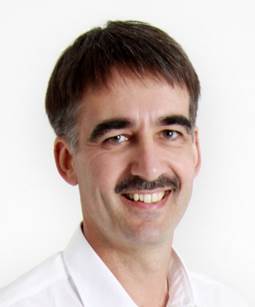
Dr. WJvdM Steyn
Dr. Wynand Steyn is Head of Department and professor of the Department of Civil Engineering, and Chair of the School of Engineering at the University of Pretoria. He is a professionally registered pavement engineer with a research interest in vehicle-pavement interaction, accelerated pavement testing, pavement engineering, pavement materials, Civiltronics and instrumentation. He completed both his undergraduate and graduate studies at the University of Pretoria, South Africa. He has authored, co-authored and edited 38 journal papers, 21 book chapters (author / co-author / editor) and 108 conference papers. He is Associate Editor of the International Journal for Pavement Engineering and the International Journal of Pavement Research and Technology, and has a B3 National Research Foundation (NRF) rating. He is a Fellow of the South African Institution of Civil Engineers, Fellow of the South African Academy of Engineering (SAAE) and an adjunct professor at the Chang’an University in Xian, and the Shandong Jianzhu University in Jinan, China.
Digital Twinning of pavement infrastructure for improved modelling and analysis
Prof Wynand JvdM STEYN, University of Pretoria, South Africa
Digital twins can be defined as integrated, multiscale, transdisciplinary models of infrastructure that can be used for complex analyses and simulations of the infrastructure system to improve the understanding of performance, operations and behaviour. For pavement infrastructure, it can typically consist of a digital dimensional model of the pavement structure and tyre load system, supported by detailed information regarding the properties of each of these components and the environment in which it functions, and models for their interaction. Such digital twins can increasingly serve as the primary lifecycle management systems for engineering practitioners. Intelligent sensor platforms and networks within the infrastructure supports continuous data collection that drives the improvement of the understanding of the system as new data becomes available. Fusion of transdisciplinary tools and data (termed Civiltronics) .In this presentation some examples of the potential use of a digital twin of a functional pavement system are discussed with inferences regarding the role of the various sub-systems (materials science, pavement mechanics, structural and functional behaviour and life-cycle analysis).
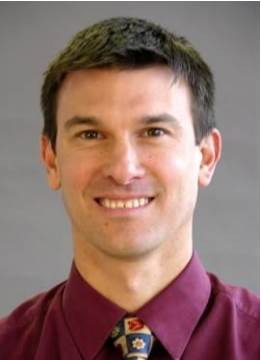
Dr. Gordon Airey
Dr. Gordon Airey is Director of the Nottingham Transportation Engineering Centre (NTEC) and Professor of Pavement Engineering Materials at the University of Nottingham. He has served as a past Director on the Board of the International Society for Asphalt Pavements (ISAP) and has over 25 years’ research experience in pavement engineering, both in South Africa and the UK. He has authored and co-authored over 350 journal and conference publications as well as producing chapters for a number of highway and pavement engineering textbooks. He is a professional registered chartered engineering with the Institution of Civil Engineers and the Chartered Institution of Highways and Transportation with research interests in rheological characterisation of bitumen, bitumen-filler mastics and asphalt mixtures; the durability of asphalt materials; the micro-structural characterisation of asphalt mixtures; and the use of secondary materials, including crumb rubber and bio-binders. During his 23 years in academia, he has held positions of Research Scientist and Visiting Professor at Texas A&M University and the University of Illinois at Urbana-Champaign. He is always thankful for the numerous other opportunities to collaborate with colleagues and friends from universities and industrial organisations throughout the world.
Quantifying Moisture Susceptibility through Adhesion, Cohesion and Diffusion
Prof Gordon Airey, University of Nottingham, United Kingdom
Moisture-damage of asphalt pavements is a major cause of premature failure of road pavements and therefore has a significant influence on the operation and structural performance of our road infrastructure. Due to the complex nature of the mechanisms associated with moisture damage, empirical approaches have traditionally been used to evaluate the potential of moisture-damage in asphalt mixtures. In an attempt to ensure increased durability, both innovate experimental techniques and fundamental modelling and predictive tools have been developed to increase the understanding of the adhesive and cohesive properties of asphalt materials and how the presence of water, and its diffusion and permeability, affect the moisture sensitivity of pavement materials. In this presentation research efforts undertaken over the last 15 to 20 years in terms of adhesion and cohesion testing, modelling and predicting as well as diffusion analysis are discussed with direct relevance to the fundamental as well as practical assessment of the moisture sensitivity of asphalt materials.

Dr. Yiqiu Tan,
Dr Yiqiu Tan is the full Professor of Harbin Institute of Technology, and Dean of the School of Transportation Science and Engineering, She is also the Chairman of the Professor's Committee and leader of the First-Level Discipline of transportation engineering. She was awarded by the Outstanding Youth Fund of the National Science Fund Committee(NSFC),the special professor of the Yangtze River Scholar Award Plan and winned the national title of a pacesetter of meritorious service.Prof. Tan is also a member of the Expert Advisory Committee of China Highway Society, the Petrochemical Subcommittee of the National Technical Committee for Specialized Standardization, the Asphalt Concrete Subcommittee of the National Technical Committee for Concrete Standardization, the working group of the International Road Federation (PIARC) in cold regions, and the editor of four leading international journals in road engineering, such as RMPD.
Skid resistance and preservation of the snow/iced pavement

Prof. Dr.-Ing. Markus Oeser
Prof. Dr.-Ing. Markus Oeser received his Ph.D. degree from the Dresden University of Technology, Germany in 2004 and then carried out his postdoctoral research in Delft University of Technology, Netherland until 2006. Between 2007 and 2011, he was a lecturer at the Institute of Geotechnics, Road Construction and Traffic Engineering, University of New South Wales (UNSW), Australia. From 2011, he has been the Chair-Professor of Highway Engineering and Director of the Institute of Highway Engineering at the RWTH Aachen University and he has been the Dean of the Faculty of Civil Engineering from 2016. Over the years he has been devoted to the systematic study of mechanics design and new material development of pavement structures. He has got great achievements on the application of numerical methods on pavement engineering and construction of constitutive models of pavement materials. Moreover, he has deeply investigated on the design method of high-performance permeable pavement structure, development of polyurethane material and characterization of mechanical behavior of asphalt mixture at multiscale.
Study of Asphalt Compaction and Asphalt Performance based on Numerical Simulation and Intellectual Measurement
Prof. Dr.-Ing. Markus Oeser, Institute of Highway Engineering, RWTH Aachen University, Aachen, Germany
A high-quality compaction of the asphalt mixture is of great importance for the proper design and construction of high performance asphalt pavements. In order to improve the performance of asphalt, the compaction process of the hot asphalt mix is numerically simulated. The flow of material during the compaction under the paver screed is simulated by discrete element method (DEM). In addition, an intellectual measurement was applied to monitor the movement of granular material during paver compaction, the movement or kinematic properties of material during paving and the contact force condition of paving materials can be detected. After the paving, the asphalt performance is simulated by finite element method (FEM) using the generated micro-structure of the asphalt mixtures from X-ray Computer Tomography (X-ray CT). Different compaction methods and material properties of the asphalt mixture components are applied to investigate their influence on the performance of the asphalt mixtures. This study will help with forming the currently missing theoretical framework to optimize in-situ compaction of asphalt pavement. Meanwhile, it can also be used for guiding the construction of better asphalt compaction equipment (pavers, rollers) and thus ensure the transfer of the acquired basic knowledge into application-oriented research and development.
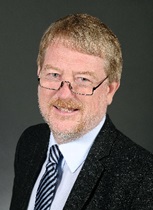
Dr.-Ing. habil. Michael Kaliske
Michael Kaliske was born in Hamburg, Germany. He studied and graduated from the University of Hannover and University of Wales, Swansea. He was working as research fellow at the Institute for Structural Analysis (University of Hannover) 1991 to 1999. He was awarded his Ph.D. in 1995 and the Habilitation in 1999. Subsequently, he joined the tire company Continental as Head of the Mechanics and Simulation Development Department until 2002. In 2002, he was awarded the Chair of Structural Mechanics at University of Leipzig (2002 to 2008). Since 2006, he is Director of the Institute for Structural Analysis at Technische Universität Dresden. Further responsibilities are Secretary of the International Association of Applied Mathematics and Mechanics since 2009, Editor of Tire Science and Technology since 2010, and President of the German Association of Computational Mechanics since 2017, among others. Michael Kaliske is interested in modelling and simulation of structural behaviour at different length scales as well as its multi-physical aspects.
Multi-scale and Multi-physical Numerical Modelling of the Tire-Pavement System
Prof. Dr.-Ing. habil. Michael Kaliske, Institute for Structural Analysis (ISD), Technische Universität Dresden, Dresden, Germany
The structural behavior of pavements is characterized by complex multi-physical phenomena at several spatial and temporal scales in consequence of e.g. material properties, climatic impact and the loading by rolling tires. Detailed and realistic numerical models of the tire-pavement system enable to gain profound and deep understanding of its structural behavior and are one key aspect for the future design of durable and robust pavement constructions. This contribution presents a numerical modelling framework for the coupled tire-pavement system. Thereby, all components – tire, pavement and tire-pavement interface – are represented by detailed submodels using a thermo-mechanical simulation approach within finite element framework. An Arbitrary Lagrangian-Eulerian approach for the pavement subjected to rolling tire load enables a numerical efficient computation of short-term phenomena. Long term phenomena like accumulation of plastic strains in the pavement structure due to traffic and climate loads over years are estimated via a temporal homogenization procedure. The potential of the coupled tire-pavement model for numerical investigations as well as its application in future research on the digital twin of the system is discussed.

Laurent Porot
Laurent is Market development manager at Kraton. He has a master degree in civil engineering from the Ecole Nationale des Ponts et Chaussées, France. He is cumulating 30 years worldwide expertise in materials, design and pavement engineering. He worked for consultancy engineering company, Egis group, at designing and specifying roads, for bitumen supplier, Shell, as researcher and technology implementer, for global contractors and road concession, Vinci group and now technology leader for paving and roofing in Europe for Kraton. He is member of numerous international scientific committees, representative of Kraton at EAPA and Eurobitume and active member of the Rilem for bituminous materials. He has numerous papers and publication on pavement material and engineering.
Rheology addressing bitumen complexity for functional pavement
Laurent Porot, Kraton Chemical B.V.
Predicting the performance of asphalt pavements from the material behavior is a key element for pavement engineering. It can be performed at different levels from asphalt mix materials down to the asphalt binder. The use of Dynamic Shear Rheometer techniques has helped moving from an empirical to more fundamental approach and understanding of the rheological behaviour of the bituminous binder. Under various test conditions the complexity of bitumen, both neat bitumen or modified, can be addressed.. This keynote will follow the different parameters and approaches when analysing the DSR data with different bitumen types, soft to hard, polymer modified and aging conditions. While the DSR itself can generate straight forward data set, the analysis can include various forms such as master curve, Black space and as well interpretation using single parameters such as Performance Grade criteria, cross over parameters, Glover-Rowe parameter amongst others. All of them are valid for certain conditions and should be seen as complimentary to address the whole complexity of various bituminous binders.

Dr. Hongduo Zhao
Dr.Zhao is vice dean of The Key Laboratory of Infrastructure Durability and Operation Safety in Airfield of CAAC. He has got his PhD degree at Tongji University in 2007. He has been working in UC Davis during 2009 to 2010 as a visiting scholar. His research area is about smart road and airport pavement, including condition monitoring, energy harvesting and precast method of smart pavement.
He is one of the founders of “International Consortium for Smart Road Innovation (ICSRI)”.
Vibration driven mode for precast smart concrete pavement
Prof Hongduo Zhao, Tongji University, China
An ideal smart road consists of specially tailored structural materials, a network of sensors, cloud data centers, communication networks, and power systems. It has the capabilities of active detection, automatic analysis, self-adaptation, and dynamic interaction. A smart road primarily services for and interacts with connected and autonomous vehicles seamlessly, and thus considerably reduces travel risk, enhances road performance, extends service life, and improves service quality. The smart pavement is the primary component of smart road. Various technologies can be used to drive the smart functions of smart pavement, including intelligent materials, distributed optical fibers, intelligent film, piezoelectric devices, traditional sensors, and so forth. In this presentation, the vibration driven mode for smart precast concrete pavement is discussed. Some smart functions, such as wheel track analysis, support condition evaluation, weight in motion, are also discussed.

Dr.-Ing. Ronny Behnke
Dr. Ronny Behnke received his diploma degrees in Civil Engineering from Technische Universität Dresden in 2009 and from INSA Strasbourg in 2010. In 2015, he received his doctoral degree in Civil Engineering from Technische Universität Dresden. He is currently working as a postdoctoral researcher at the Institute for Structural Analysis, Technische Universität Dresden. He is also a member of the DFG Research Unit 2089 on “Durable Pavements for the Traffic of the Future – Coupled System: Road-Tire-Vehicle” (DFG FOR 2089).
Multiscale and multiphysical tire-pavement analysis: A mesostructure inspired material model for the short- and long-term material behavior of asphalt
Dr.-Ing. Ronny Behnke, Institute for Structural Analysis (ISD), Technische Universität Dresden, Dresden, Germany
For the detailed analysis of tire-pavement interaction, its structural components (tire, pavement, tire-pavement interface) have been represented in finite-element-discretized form within a thermo-mechanical simulation approach. The tire-pavement model captures short-term phenomena (rolling tire, day-night temperature change) as well as long-term phenomena (annual temperature change, change of traffic intensity). Several submodels (tire, multiscale friction law, pavement structure) have been developed considering different length and time scales in combination with an arbitrary Lagrangian Eulerian (ALE) formulation for tire and pavement (steady state rolling condition). In this contribution, a mesostructure inspired material model for asphalt is proposed to realistically capture the material behavior within the described simulation approach. The material model consists of a short- and a long-term part connected in series and represents the material's short- and long-term response to repetitive loading.

Dr. Hainian Wang
Dr. Hainian WANG is a full professor of Road Engineering of Chang'an University, He is the Director General of Highway College In charge of the affairs of the School Committee and
the Dean of Chang'an Dublin International College of Transportation at Chang'an University.
Characterization of morphology for coarse aggregates and its effect on mixture performances
Dr. Prof. Hainian WANG, Chang'an University, China
Dr. Xudong Wang
Dr. Xudong Wang is the PI of Research Institute of Highway Ministry of Transport(RIOH), China. He is also a adjunct professor of Southeast University. He is approved by the national plan of Hundred, Thousands and Ten Thousand Talent Projects, titled with outstanding contribution to the national middle-aged and win young experts Young Science & Technology Award of China.
RiohTrack in China
Dr. Xudong Wang, Research Institute of Highway Ministry of Transport(RIOH), China

Dr. Yuqing Zhang
Dr. Yuqing Zhang is a senior lecturer (associate professor) in highway engineering and the Director of the Aston Institute of Materials Research (AIMR) at Aston University in Birmingham, UK. His research is focused on mechanics-based multiscale and multiphysics modelling of pavement materials and structures, renewable materials for sustainable roads and intelligent technologies for future city infrastructures. Leading as a principal investigator, Dr Zhang has secured research projects from European Horizon 2020, Royal Society, Royal Academy of Engineering, British Academy and asphalt industries for over £1 million in the past 4 years. Dr Zhang now serves on the steering committee of the UK’s National Asphalt Research Consortium (NARC) and is an active member on ISAP, TRB, EATA and RILEM technical committees. He also serves as an associate or guest editors for 3 technical journals, a reviewer for 38 academic journals and a referee for 6 European countries’ national research councils. Dr Zhang is the recipient of Theodore von Kármán Fellowship from RWTH Aachen University, Germany.
Trilogy of Binder Fatigue Cracking: Quantification, Initiation and Propagation
Dr. Yuqing Zhang, Aston University, United Kingdom
This study presents a comprehensive research on mechanics models and validations for the quantification, initiation and propagation of binders’ fatigue cracking. A dynamic shear rheometer based cracking (DSR-C) model is derived based on viscoelastic damage mechanics to predict the cracking length of asphalt binders subjected to a rotational shear fatigue load. The DSR-C model is proved, by comparing with time sweep fatigue test results, being capable of accurately predicting the cracking length at different temperature, frequency, loading and aging conditions. Using the cracking length from DSR-C model is a more direct and reliable method to quantify the fatigue performance of asphalt binders compared to the traditional empirical parameters using modulus or dissipated energy. A viscoelastic Griffith fracture model is developed to determine the criterion of cracking initiation and a pseudo J-integral based Paris Law is employed to obtain the crack propagation speed for the fatigue process of asphalt binders. Surface energy measurements from contact angle tests were used to validate the fatigue crack initiation criterion. Paris’ law’s coefficients (A and n) are determined from the steady stage of crack growth curve and proved to be material properties that are temperature dependent but independent of loading conditions. Future study will be focused on the characterisation of fatigue failure of asphalt binders.

Dr. Zhen Leng
Dr. Zhen Leng is an Associate Professor and the Director of the Road Research Laboratory at The Hong Kong Polytechnic University. He received his Bachelor and Master degrees from Southeast University in China, and PhD degree from University of Illinois at Urbana-Champaign in the US. His research interests mainly include sustainable pavement materials and technologies, and nondestructive evaluation of transportation infrastructure. His research projects have been funded by various sources such as the Research Grant Council, Construction Industry Council, Environmental Conservation Fund, Innovation and Technology Commission Funding, Highways Department, and Environmental Protection Department in Hong Kong, and various agencies in the US. He is currently the Vice President of the ASCE Greater China Section, an Executive Board Member of the Hong Kong Society for Transportation Studies (HKSTS), and an Executive Board Member of the International Association of Chinese Infrastructure Professionals (IACIP). He also serves as an Associate Editor of Journal of Cleaner Production, ASCE Journal of Materials in Civil Engineering, and ASCE Journal of Transportation Engineering, Part B: Pavements, and an Editorial Board Member of several other journals, such as Road Materials and Pavement Design, and Transportation Research Part D: Transport and Environment.
Relationship between the Self-healing Behavior of Asphalt Mixture and the Thickness Distribution Characteristics of Asphalt Mortar
Dr. Zhen LENG, The Hong Kong Polytechnic University, HKSAR, China
The distribution characteristics of asphalt mortar play an important role in the macroscopic self-healing behavior of asphalt mixture, but the relevant quantitative evidence is insufficient. To fill this gap, this study aims to quantify the thickness distribution characteristics of asphalt mortar through image analysis and investigate their relationship with the macroscopic self-healing properties of asphalt mixture, which were obtained through the semi-circular bending (SCB) fatigue tests. It was found that both the gradation type and nominal maximum aggregate size affect the mortar thickness distribution, while the correlation between the macroscopic volumetric indexes of the asphalt mixtures and the microscopic thickness indexes of the asphalt mortars is poor. The self-healing performance of the asphalt mixture during the SCB fatigue tests was found to be affected by both the average value and standard deviation of the mortar thickness, while their ratio serves as an effective index to predict the self-healing performance of the asphalt mixture.

Dr. Xingyi Zhu
Dr. Xingyi Zhu has won the National Science Fund for Excellent Young Scholars as a professor of College of Transportation Engineering in Tongji University. Engaged in the research of “Mult-scale analysis and numerical simulation” and “Functional and smart pavement”, including self-healing of asphalt materials, the risk assessment of skid-resistance performance of aircraft landing on wet runway, a low-energy consumption perception theory of smart runway based on structural vibration fields. She is PI for more than 20 projects, including 4 programs of National Natural Science Foundation of China, 1 National Key Research and Development Program, and Innovation Projects of Shanghai Education Commission. In total, she applied for more than 10 invention patents, co-wrote 4 industrial and local standards and 1 national planned textbook, chief judge for 2 consultation reports issued by CAAC and published more than 80 journal papers. Zhu has won the first class of Progress of Science and Technology Prize in Shanghai, the first prize of the Science & Technology Award of China Highway & Transportation Society, the second prize of the Cooperative Innovation Award of China Industry-University-Research.
Effects of surface texture deterioration and wet surface conditions on asphalt runway skid resistance
Prof Xingyi Zhu, Tongji University, China
Skid-resistance performance of a runway greatly influences aircraft landing safety. A wet runway significantly increases the incidence rates of aircraft overrun. To study the influence of the skid-resistance performance of a runway on aircraft landing, a co-simulation method is proposed by combining a tire-water film-runway simulation and an aircraft simulation. First, a wide-area dynamic sensing method of water film thickness on asphalt runway is proposed. Then, a finite element (FE) model of the local tire-water film-runway simulation is established to obtain the combination coefficient-slip ratio curve of a tire on a wet runway. After that, a global model of an Airbus A320 virtual prototype (VP) is created in the ADAMS/Aircraft software environment (MSC Software Corp., CA, USA). On the basis of fuzzy control theory, a two-dimensional (2D) fuzzy controller of the aircraft anti-lock brake control system (ABS) is established. The 2D fuzzy controller is connected with the virtual prototype model created in the ADAMS/Aircraft software environment to construct a full-scale simulation model of the aircraft with the ABS system. The combination coefficient-slip ratio curve of the tire on the wet runway obtained in the local simulation is introduced into the full-scale hydroplaning simulation model of the aircraft. Finally, the global-local multiscale simulation method is used to analyze the skid-resistance behavior of the aircraft on three types of runways, and the effects of runway unevenness, touchdown speed and water film thickness on the aircraft landing safety are studied.
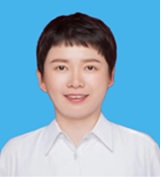
Dr. Huining XV
Dr. Huining Xu is professor of the School of Transportation Science and Engineering at Harbin Institute of Technology. She has a research interest in pavement materials, pavement freezing-thawing damage, asphalt mixture seepage characteristics, pavement ice-remove, pavement heat and mass transfer. She graduated with a bachelor’s degree from Shandong Institute of Architecture Engineering, and completed both her master’s and doctor’s degree at Harbin Institute of Technology, China. She has authored, co-authored and edited 35 papers at the top and secondary level of SCI, 11 papers on national first-level academic journal. She is in the editorial committee of the Journal of Traffic and Transportation Engineering and the China Journal of Highway and Transport. She is associate president of Polar Academy Harbin Institute of Technology.
Thermal-economic modeling and analysis of snow melting system for airfield runway using low temperature heating fluid
Prof Huining Xu, Harbin Institute of Technology, China
There are many safety accidents on airport runways caused by freezing and snowing, which seriously affect the safety of airport runways. The current methods of ice and snow removal on airport pavements, such as spraying snow melting agents, mechanical or artificial snow removal, cannot meet the requirements of airport. Therefore, the hydronic heated pavement system with low temperature fluid is proposed as a new type of active ice and snow removal technology for airport runways. This technology has a wide range of snowmelt thermal energy sources, high energy efficiency and strong system controllability. It can keep no snow existing on runway surface during snowfall. It has broad application prospects in the field of ice and snow removal of airport runway.
This technology achieves the purpose of melting snow and ice by circulating the fluid with heat and increasing the temperature of the road surface. The operating environment and mode of the system have an important impact on the consumption of snowmelt energy, and it is also related to the economic benefits of the technology. On the one hand, clarifying the characteristics of the economic benefits of the system can guide the determination of the operating mode of the system and keep the operating cost of the system at a low level; on the other hand, it can reduce the energy consumption of the system, realize energy saving and carbon reduction.
In this presentation, the characteristics of the economic benefits of the system operation are discussed, provide a theoretical basis for construction and operation mode determination of the system.
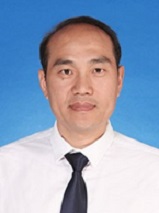
Dr. Shifeng Wang
Dr. Shifeng Wang is a professor in School of Chemistry and Chemical Engineering at Shanghai Jiao Tong University. He has more than 50 research projects funded by industries and NSFC, “863 Plan”, International cooperation project of MOST. Dr. Wang’s major research topic is polymer processing for high performance pavement. He has served as member of committees of Journal of Petroleum Asphalt (China), Journal of China Tire Recycling and Reusing Association. He has author/co-author of more than 170 publications and own 23 patents. Most of these patents were transformed into products which promoted the usage of polymer in the pavement.
Light pyrolysis tire rubber towards to durable porous pavement
Shifeng Wang, Ph.D., Prof, Shanghai Jiao Tong University, China
High viscosity SBS modified asphalt (HVMA) has a strong elastic network structure which providing the binder with high comprehensive performances. However, this network become weak after suffering from weathering because of the inherent aging susceptibility of SBS. Base on exploring the effects of real weather aging on highly modified mixtures with SBS in porous pavement, HVMA with high aging resistance was prepared by introducing light pyrolysis rubber (DR). Infrared spectroscopy, gel-permeation chromatography, optical microscopy and scanning electron microscopy were used to evaluate the aging performance of SBS and asphalt from a microscopic perspective. The results showed that an obvious and gradient oxidation reaction occurred in porous asphalt, especially in top layer, which degraded SBS and made binder brittle. The addition of DR in HVMA observably decrease the carbonyl index and increase the ductility of the modified binder after aging. HRVMA shows better properties in anti-raveling and water resistance. A porous pavement with better age-resistance was designed, prepared and paved for the further verification of durability, especially the heavy load traffic in China.
